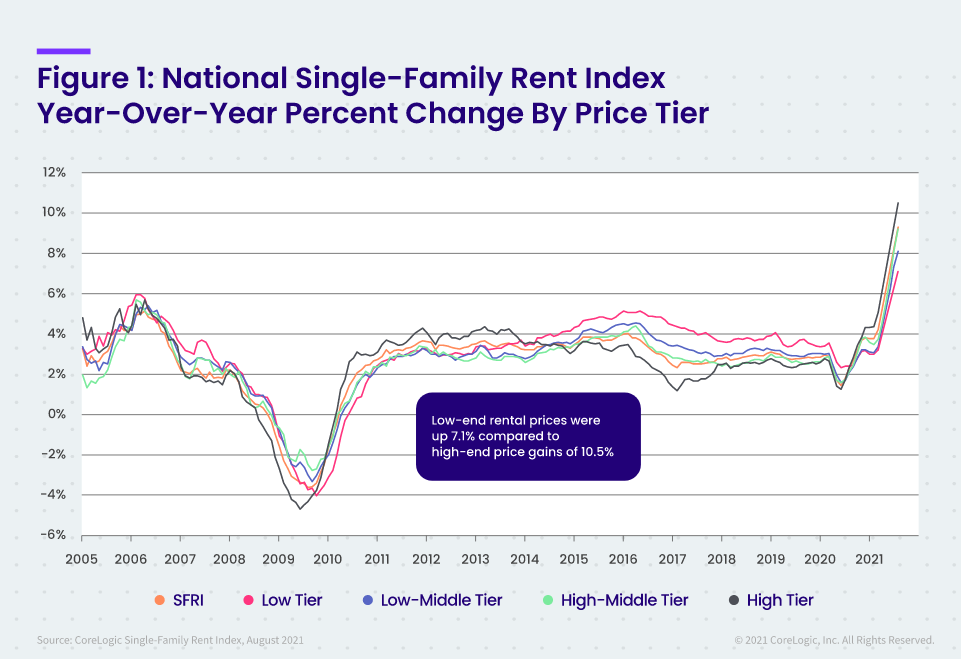Rental prices are going through the roof. The median rent for a single-family home in the U.S. jumped 10.2% in September compared to one year ago, having previously risen by just 2.6% from 2019 to 2020.

That’s according to a new report from the real estate industry analytics firm CoreLogic, which blames the rapid rent price increases on strong job growth and sky-high prices in the for-sale housing market. Added to that is the already-strong demand for single-family rental homes fueled by the coronavirus pandemic, CoreLogic said.
A separate report by CoreLogic recently found that 93% of U.S. consumers believe buying a home is a good investment. Yet, with competition so steep in the housing market, many would-be homeowners are forced to remain as renters.
The single-family housing market is especially hot right now as people have been looking for more space due to COVID-related lockdowns. In addition, there’s pressure from the large millennial generation as more of them come of age and step into marriage and parenthood.
CoreLogic Principal Analyst Molly Boesel said single-family rental vacancy rates were close to 25-year lows in the third quarter. The lack of rental homes available pushed rents to double-digit growth in the quarter, she added.
“Rent growth should continue to be robust in the near term,” she warned. “Especially as the labor market improves and the demand for larger homes continues.”

Some markets are much hotter than others though. In Miami, rents grew by a stunning 25.7% on average, year-over-year. Miami also has one of the highest median rents in the nation. Other hot markets include Phoenix and Las Vegas, where rents grew by 19.8% and 15.9% respectively. CoreLogic speculated that those markets were seeing faster rent growth due to a rebound in tourism as the states reopen. Austin, Texas and San Diego rounded out the top five markets for rent growth.
Tenants will be much better off financially if they choose to rent in Chicago, Boston, Philadelphia, Washington D.C. and New York City, where rents rose by less than 5% from the year before.